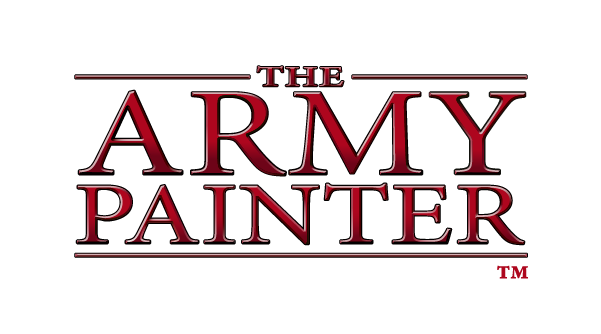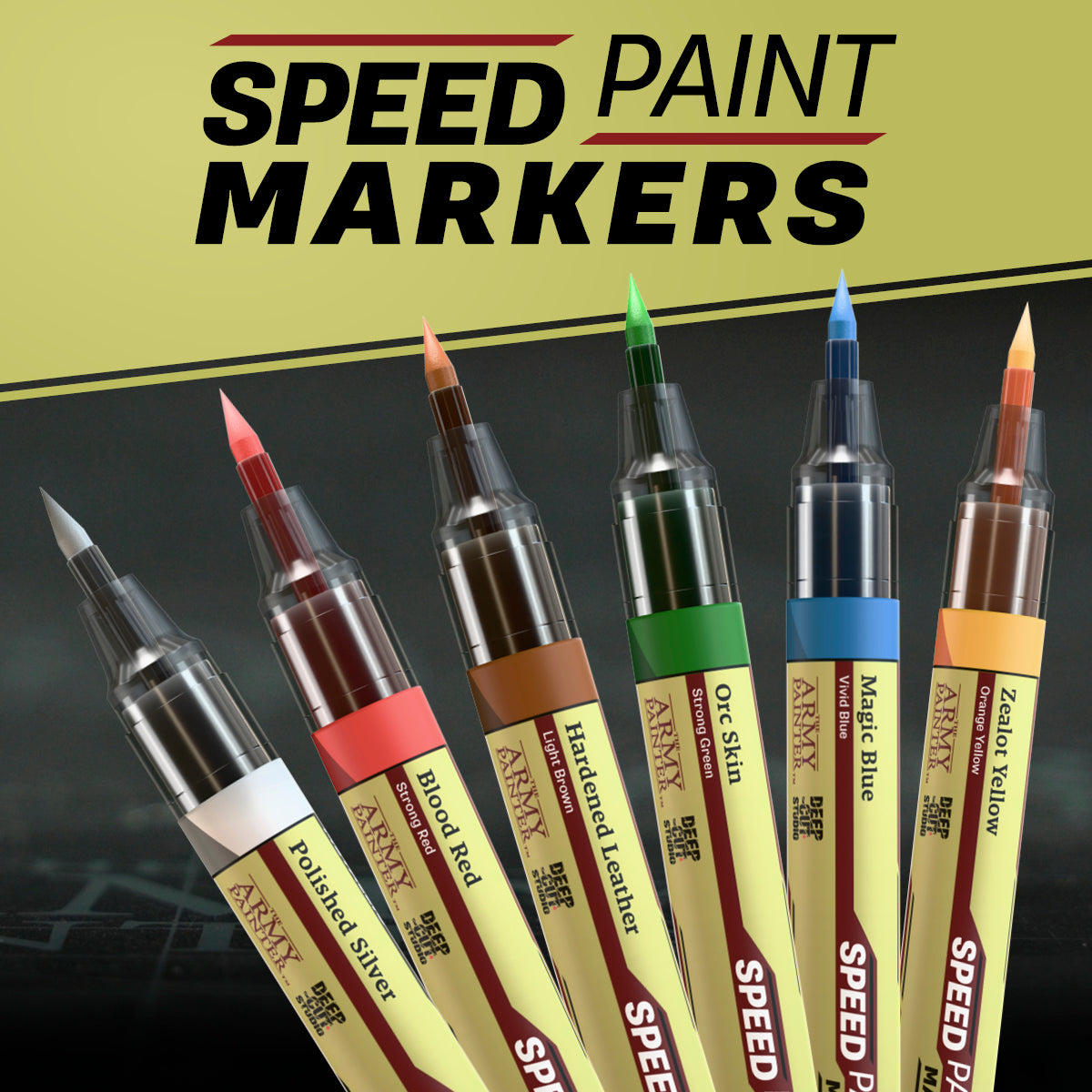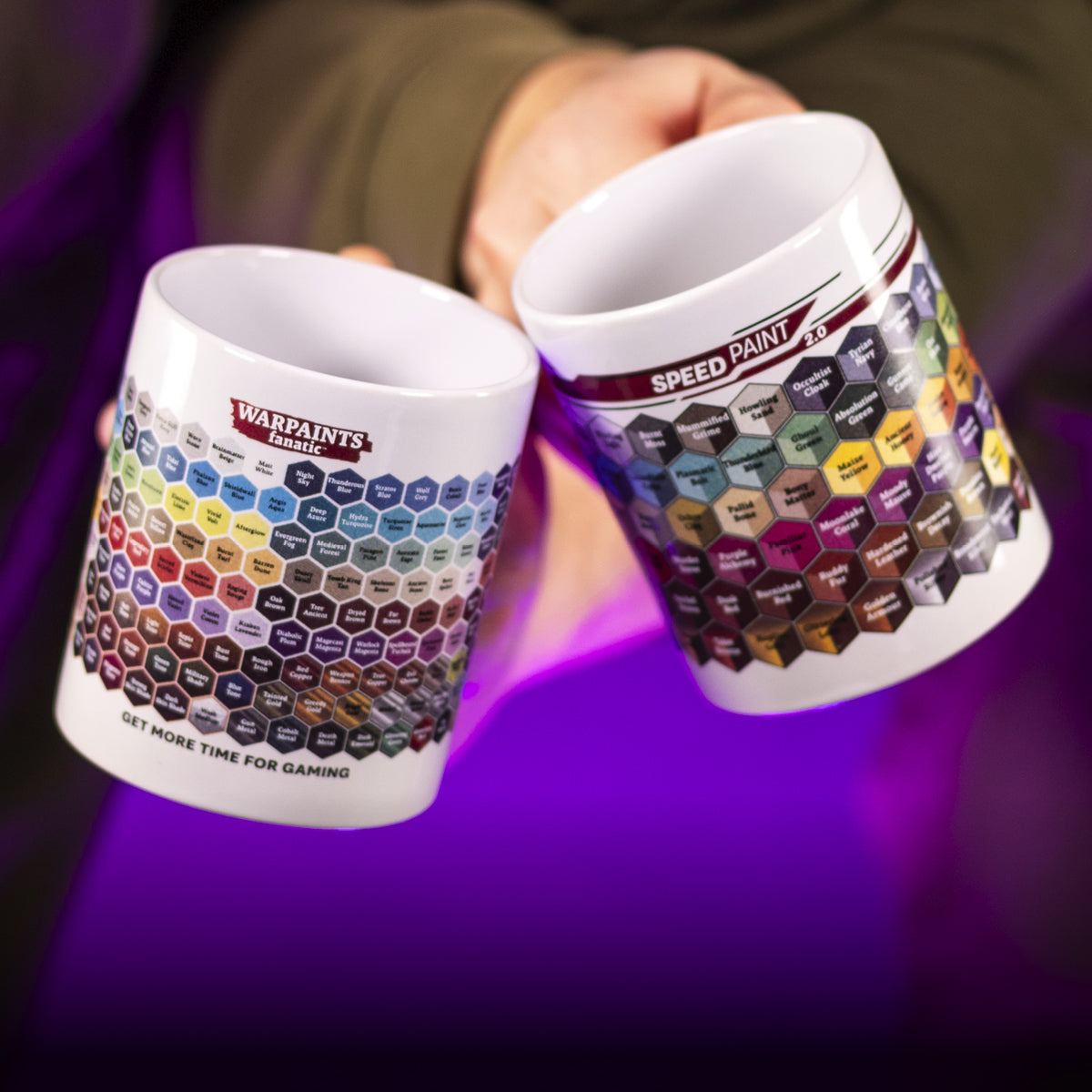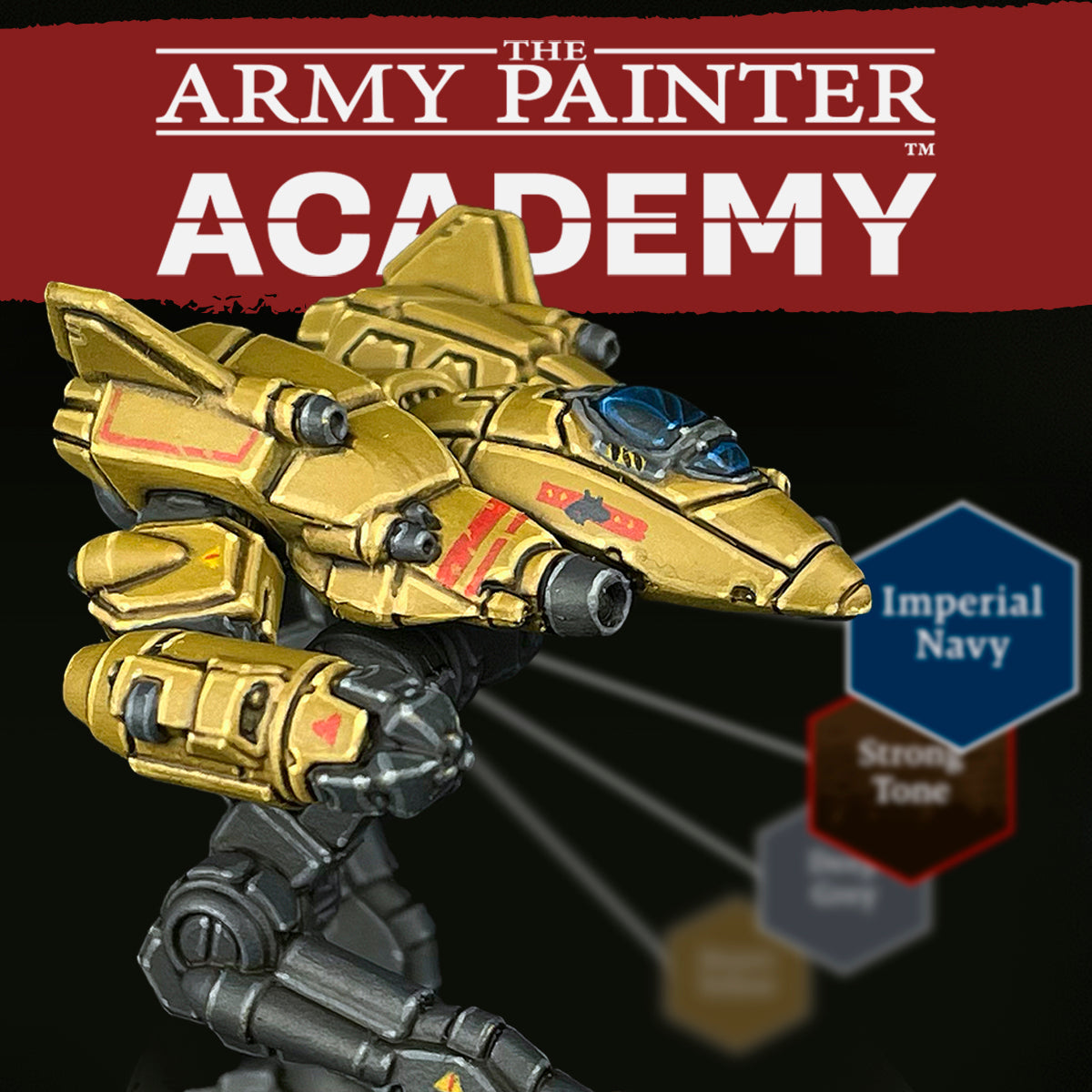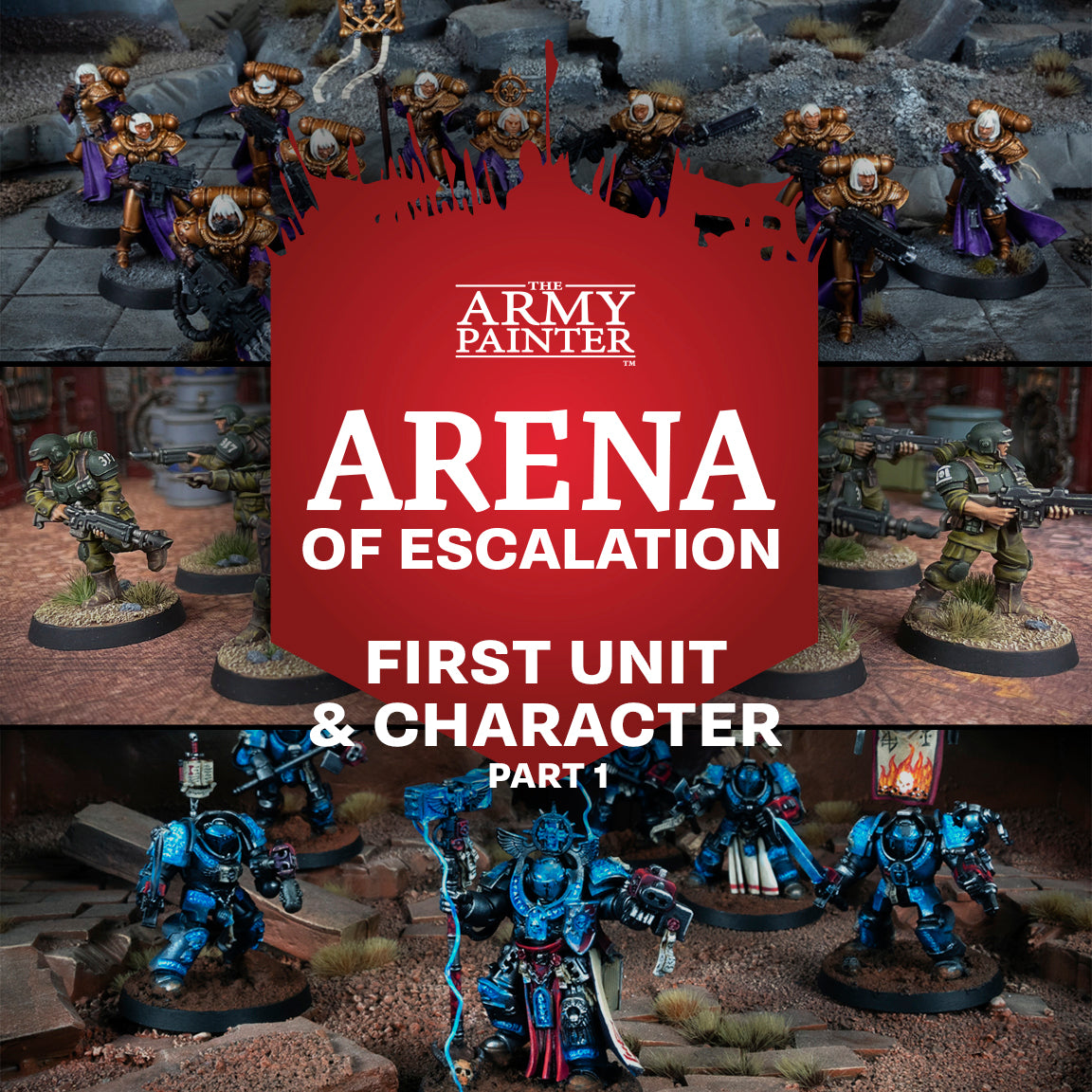An Overview of the Non-Metallic Metal and True-Metallic Metal Painting Techniques
Metallic elements are omnipresent in the vast universe of miniature figures. Whether it’s the gleam of a knight’s sword, the power armour of a Space Marine, or the living metal skin of the Necrons.
There are generally two broad approaches to painting metallics on miniatures: the Non-Metallic Metal (NMM) technique) and the True-Metallic Metal (TMM) technique.
But how do they differ, and which technique should you choose in your next project?
This article will answer such questions by giving you a quick rundown of both techniques and break down the differences so you can select the right technique for your next metallic project.
What is TMM?

Let’s look at the True-Metallic Metal (TMM) painting technique first.
With the True-Metallic Metal (TMM) painting technique you use paints that have actual metal flakes in them (like mica, aluminium flakes, or, as in the Fanatic Metallics, a special combination of both to create the appearance of metal. The metallic pigments reflect actual light and give the miniature a realistic glint that moves with the viewer’s perspective.
The allure of the TMM technique lies in its simplicity and accessibility. Because the technique relies on the inherent properties of the metallic paint to achieve a metallic look and finish, it’s often considered more straightforward. For beginners, this is an easier and more accessible technique to pick up, as it requires less specialised knowledge of light and shadow and less practice to achieve satisfactory results that interact naturally with their environment. It’s also a faster technique if you have a lot of minis to complete.
Although the technique might be easier for beginners to master than the Non-Metallic Metal (NMM) painting technique, painters might struggle to achieve the same depth and contrast level. To do so, you must apply other techniques like washing, drybrushing, and highlighting. Also, because the TMM technique relies on the inherent properties of the metallic paint, it’s slightly less controllable than the NMM technique.
If you want to try the technique, we’ve created a step-by-step guide for you to follow at the button below.
What is NMM?

With the other technique, Non-Metallic Metal (NMM), you use non-metallic paints to create the illusion of metal by mimicking how light interact with metallic surfaces.
To do so, you need a good understanding of how light behaves and reflects on metal surfaces and reproduce this interplay with precise and strategically placed shades and highlights. Because it requires a deeper understanding of colour theory and how light interacts with surfaces, it’s considered a more advanced painting technique than TMM.
But what makes the technique difficult to master is also what makes it so appealing to painters. By not being dependent on actual light reflections, you have complete control over the light source. This makes it possible to maintain a consistent metallic appearance under any lighting condition, which is particularly valued in photography and display settings.
Compared to the TMM technique, NMM is typically more time-consuming, requiring careful layering and blending to create the illusion of metallic surfaces. This can make it less suited for projects where time is a constraint. It can also be quite a daunting technique for beginners due to its intricacies and the need for precise execution to look convincing.
If you want to try the technique, we’ve created a step-by-step guide for you to follow at the button below.
What are the differences between the NMM and TMM painting techniques?
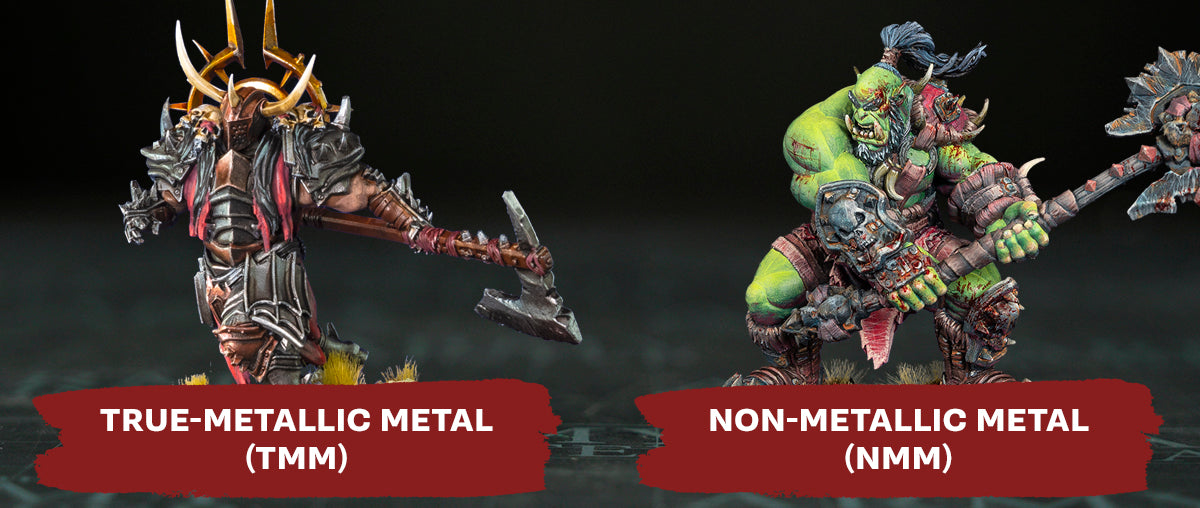
Now that we have covered the basics of the two techniques let’s break down the differences.
Materials Used
- TMM uses actual metallic paints, such as the ones from the Fanatic Metallics Paint Set, giving the painted surface a real reflective quality. The inherent property of the metallic paint is what gives the metallic look and finish.
- NMM achieves the illusion of metal through the application of “regular” acrylic paints. By manipulating light and shadow, you can achieve the appearance of metal without using metallic pigments.
Skill and Technique
- TMM is generally considered more accessible and straightforward, making it easier for beginners to pick up. Since the metallic paints inherently reflect light, the painter’s main task is to apply the paint effectively, using shading and highlighting to enhance the natural metallic effect.
- NMM requires a deeper understanding of how light reflects off metal surfaces and is considered more challenging. It demands precise control over paint gradients and transitions to convincingly simulate metallic reflections with matte paints.
Time and Effort
- TMM can be quicker to execute, as the metallic effects are intrinsic to the paint used. Additional shading and highlighting complement the effect but are generally less labour-intensive than NMM.
- NMM is typically more time-consuming, requiring careful layering and blending to create the illusion of metallic surfaces. This can make it less suited for projects where time is a constraint.
Control Over Lighting
- TMM: Metallic paints introduce environmental effects to the model based on how light interacts with the surface. TMM offers less control over lighting compared to NMM.
- NMM: NMM provides greater control over lighting effects, allowing painters to manipulate how light reflects off the surface to create realistic metallic appearances.
TMM or NMM – Which Technique Should You Choose?
Whether you choose the NMM or TMM painting technique, it ultimately depends on personal preferences and the specific requirements of the project.
If you prefer total control over the finished product and you don’t mind spending extra time getting things just right, NMM might be the choice for you. On the other hand, if you need to pull off a metallic look fast without sacrificing too much quality, then the TMM is likely the choice for you.
Remember that whatever technique you choose, practice is everything!
